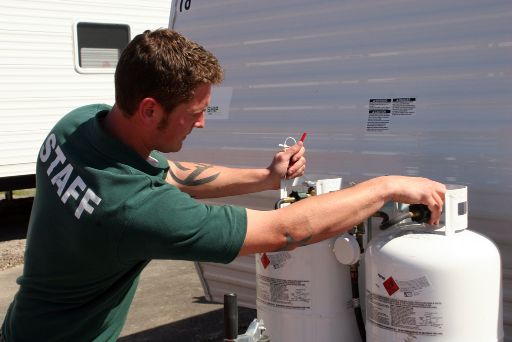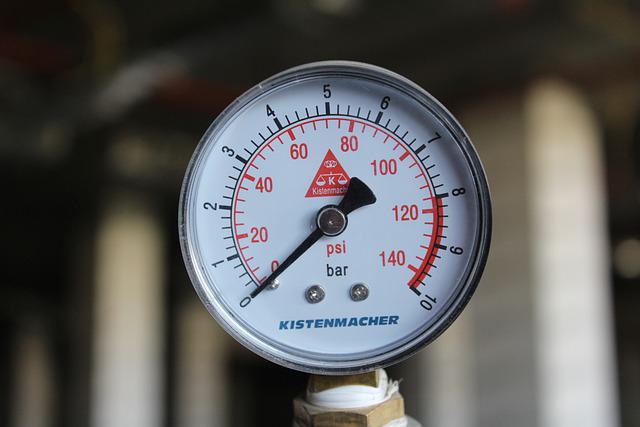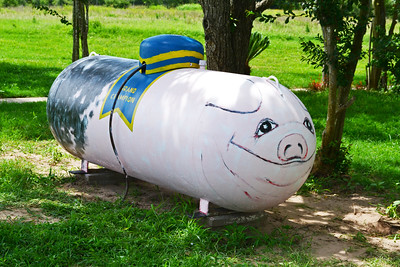
Forklift propane and grill propane both use liquefied petroleum gas (LPG), typically either propane or a mixture of propane and butane. The actual gas inside the tanks is chemically the same; however, there are differences in the tanks and the way the gas is delivered.
Here are a few distinctions:
- Tank Fittings: Tanks for forklifts often have different fittings that are specific to their usage. These fittings may be designed for the higher flow rates and different pressures required by the forklift’s engine.
- Regulators: Forklifts and grills use regulators that are designed for their specific type of equipment. These regulators control the gas pressure being released from the tank and are not necessarily interchangeable.
- Tank Orientation: Forklift propane tanks are often designed to be mounted horizontally, which is necessary for the liquid propane to be drawn properly during operation. Grill propane tanks are designed to be used in a vertical position.
- Valve Types: The valves on forklift propane tanks are typically different from those on grill tanks. Forklift tanks usually have a liquid withdrawal valve, which is necessary for the engine’s operation.
- Safety Requirements: The tanks are subject to different safety standards and certifications based on their intended use.
- Refilling and Exchange: Propane tanks for grills can often be exchanged at a variety of locations, such as grocery stores or gas stations. Forklift propane tanks are usually serviced by commercial propane suppliers who can refill the tanks on-site or exchange them.
Despite these differences, the propane itself is the same. It’s the tank design, fittings, and intended use that set them apart. It is not recommended to interchange these tanks due to the different requirements and potential safety issues. Always use the correct tank for your equipment, and ensure that any servicing or refilling is done by a professional who understands the specific needs of the equipment in question.
What is propane?
Propane is a type of gas that is most commonly used for heating and cooking purposes. It is also used as a fuel for forklifts and other vehicles. Propane is a colorless and odorless gas that is compressed into a liquid form. Ethyl mercaptan is added to make the gas smell like rotten eggs and to make it distinguishable when there is a leak.
It is a non-renewable resource that is extracted from the ground. Propane is a very versatile fuel and can be used in a variety of applications. Its chemical formula is C3H8.
When the gas is burned, it produces H2O and C2O. So when grilling or using forklifts in an enclosed space such as a house or warehouse, proper ventilation is needed.
What are the different types of propane?
Propane, a hydrocarbon gas (C3H8), is a byproduct of natural gas processing and petroleum refining. It is commonly used as a fuel for heating, cooking, and in vehicles, and it’s also utilized in industrial applications due to its clean-burning properties. Propane is stored and transported in liquid form under pressure but is used as a gas.
Different grades of propane
The propane industry categorizes the gas into several grades, reflecting its intended use and the purity of the propane. The three main grades include:
- Commercial Grade:
- Commercial-grade propane is designed for use in commercial and industrial settings.
- It has a lower purity level than some other grades and may contain higher levels of propylene and other hydrocarbons.
- This grade is suitable for fueling forklifts, fleet vehicles, and other industrial machinery.
- HD5 Propane:
- HD5 stands for “High Purity” or “High Grade” and is the most commonly distributed propane grade.
- It must contain at least 90% propane, no more than 5% propylene, and the rest is other gases.
- HD5 is preferred for residential and commercial heating, cooking, and vehicle fuel due to its high level of purity.
- Consumer Grade:
- Also known as “Bottled Gas,” this is the type typically used for backyard grills and portable stoves.
- While it is still relatively pure, it may not meet the same standards as HD5 propane and is not intended for all propane-fueled appliances.
Factors that differentiate propane types
Several factors can distinguish between different types of propane, such as:
- Purity Levels:
- The purity level of propane is crucial for its intended use. Higher purity levels, such as those required for HD5 propane, ensure efficient burning and less maintenance for appliances.
- Additives and Odorants:
- Odorants are added to propane to detect leaks since propane is naturally odorless. The concentration of these additives can vary based on the intended use and safety requirements.
- Other additives may be included to improve performance or storage characteristics.
- Intended Usage:
- The intended usage of propane is a significant factor in determining its grade. For example, propane intended for home heating or cooking requires a higher purity level than propane used in many industrial applications.
- Safety standards and regulatory requirements also vary according to the intended use, impacting which grade of propane is appropriate for a particular setting.
Understanding the type of propane required for a specific application is critical for safe operation and optimal performance of the equipment or appliances being used.
Forklift Propane
A. Characteristics of Forklift Propane
Forklift propane is a specialized type of propane used to power propane-fueled forklifts commonly found in industrial and warehouse settings. This propane typically has:
- A commercial grade rating that may not require the same purity as residential propane.
- The necessary energy content to power the high-torque engines of forklifts efficiently.
- Adaptations for the rugged and variable environments in which forklifts operate.
B. Safety Features and Regulations
The handling and storage of forklift propane are subject to strict regulations to ensure workplace safety:
- Tanks are fitted with safety valves and automatic stop-fill mechanisms to prevent overfilling and potential leaks.
- Storage regulations dictate that tanks must be kept in well-ventilated areas and away from high-traffic zones.
- Operators are required to undergo training to handle propane tanks safely.
C. Typical Uses in Industrial Settings
Forklift propane is primarily used to power forklifts, but it may also be used in other industrial equipment such as:
- Floor buffers
- Heat treating furnaces
- Generators
D. Comparisons to Other Propane Types
Compared to other propane types, forklift propane:
- Is often less pure than HD5 propane, which is the preferred choice for residential and commercial heating and cooking.
- May contain a higher proportion of propylene and is tailored for the robust engines of industrial machinery.
- Usually follows industrial safety standards, which differ from the consumer-grade standards for residential use.
Grill Propane
A. Description of Grill Propane Specifications
Grill propane, often referred to as patio or barbecue propane, is tailored for consumer use:
- It typically meets the HD5 standard due to its high purity, ensuring it burns cleanly and efficiently.
- The tanks are designed with consumer safety in mind, often smaller and more portable than industrial tanks.
B. Safety Considerations for Consumer Use
To ensure the safe use of grill propane:
- Tanks come equipped with overfill prevention devices (OPDs) and must be certified by national safety standards.
- Propane grills should be used in open, well-ventilated areas to prevent carbon monoxide buildup.
- Users are advised to regularly check for leaks and ensure connections are secure before igniting the grill.
C. Commonalities with Forklift Propane
Grill and forklift propane share several characteristics:
- Both are stored in liquid form and vaporized for use.
- They have similar chemical compositions, with propane as the primary component.
- Both require tanks with safety features, though the specific features may differ due to their different uses.
The Importance of Certifications and Standards for Grill Propane
Grill propane must adhere to:
- Regulations such as those from the National Fire Protection Association (NFPA).
- Standards for consumer safety, ensuring that the propane is suitable for use in residential environments.
- Certification requirements that help consumers identify tanks that comply with safety guidelines.
Their Similarities
| Similarity Aspect | Forklift Propane | Grill Propane |
|---|---|---|
| A. Chemical Composition | Primarily consists of propane (C3H8). | Primarily consists of propane (C3H8). |
| B. Potential Interchangeability | Can potentially be interchanged with proper equipment adjustments, though not recommended. | Can potentially be interchanged with proper equipment adjustments, though not recommended. |
| C. Role of Propane Tanks and Equipment | Tanks designed for vapor withdrawal, equipped with safety features. | Tanks designed for vapor withdrawal, equipped with safety features, usually including an overfill prevention device. |
Their Differences
| Difference Aspect | Forklift Propane | Grill Propane |
|---|---|---|
| A. Purity and Grade Requirements | Commercial grade with higher allowable levels of impurities such as propylene. | Typically requires HD5 grade, the highest purity available for consumer use. |
| B. Regulations and Standards | Subject to industrial safety standards, which may vary by workplace requirements. | Must comply with stricter consumer safety standards, including NFPA guidelines. |
| C. Cylinder Fittings and Connections | Connections may be specific to industrial equipment and might vary from consumer standards. | Connections and fittings standardized for consumer grills and appliances. |
| D. Pricing and Availability | Pricing may be lower due to bulk industrial usage; availability may be more restricted to commercial suppliers. | Often more expensive on a per-unit basis; widely available at consumer retail outlets. |
Safety and Usage Considerations for Propane
A. The Significance of Using the Correct Propane Type for Each Application
Using the correct propane type is crucial for the safety and efficiency of your equipment. Forklifts and grills are engineered to operate with specific propane grades, and using the wrong type can impair function and safety. For example, forklift engines designed for a certain propane grade may run less efficiently or sustain damage if filled with grill-grade propane, which could also void warranties or lead to safety violations.
B. Safety Tips for Handling and Storing Propane
Handling and storing propane safely is paramount to prevent accidents:
- Always store propane tanks outside, upright, and off the ground on a non-flammable surface.
- Ensure propane tanks are stored in a well-ventilated area away from heavy traffic.
- When handling propane tanks, wear protective gloves and ensure the tank is securely closed.
- Check for leaks by applying a soapy water solution to the connections and looking for bubbles when the valve is opened.
- Never smoke or have open flames near propane tanks.
C. The Consequences of Using the Wrong Propane Type
The consequences of using the incorrect type of propane can be serious:
- Safety risks: The wrong propane type may burn at a different rate or temperature, posing fire and explosion risks.
- Equipment damage: Appliances and engines are tuned for specific propane grades. Using an incorrect type can cause malfunctions or damage to components.
- Inefficiency: Using a lower grade of propane than required can result in poor engine performance or incomplete combustion in grills, leading to soot buildup and wasted fuel.
- Legal and financial repercussions: Ignoring guidelines for propane use can lead to regulatory fines and voided insurance or warranties.
Conclusion
Understanding and respecting the distinctions between forklift and grill propane is essential for both safety and functionality. The right type of propane ensures that your equipment operates efficiently and safely, minimizing the risk of accidents and equipment damage. Always follow the manufacturer’s guidelines for the proper handling and storage of propane to maintain a safe environment whether you’re at work or enjoying a cookout.
Remember, using the correct propane type is not just a recommendation; it’s a requirement for responsible operation and maintenance of your appliances and machinery. Stay informed, stay safe, and ensure that you’re using propane in the way it was intended to ensure the longevity of your equipment and the safety of all users involved.

Mike is an experienced propane technician with over 15 years of professional experience in the field. He has dedicated his career to helping customers with their propane needs, from installation to maintenance and repair. Together with Jeremy, he co-founded this website to provide useful information and guidance to customers seeking reliable propane services.



